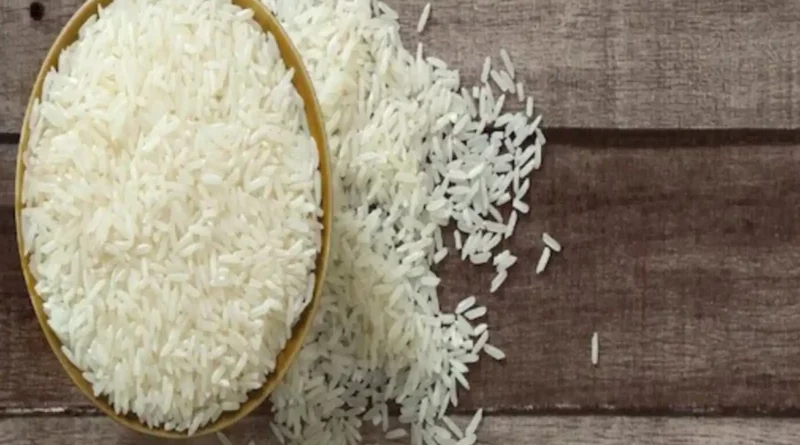India’s restrictions make rice pricier in Nepal, despite record harvest
By Krishana Prasain
Rice is becoming more expensive in Nepal, despite the record paddy harvest this year.
In the past few days, rice prices have increased by up to 7 percent, according to traders, who attribute the rise to India’s export ban. Although India has set a quota of 95,000 tonnes of rice for Nepal, it has imposed a 20 percent export duty, contributing to the price hike.
A month ago, Jeera Masino used to cost Rs2,250 for a 25 kg bag. This week, the price increased to Rs2,400. Traders say the price may reach Rs2,500.
“The price of rice could reach a historic high this month,” said Vibhor Agrawal, a member of the Association of Nepalese Rice, Oil and Pulses Industries.
In September last year, according to the Food and Agriculture Organization of the United Nations (FAO), rice prices reached a 15-year high after India restricted exports of non-basmati white rice.
India is the world’s largest rice exporter, accounting for up to 40 percent of rice in the world market. Rice trade declined after India announced export controls in July last year.
The FAO said “uncertainty over the ban’s duration and concerns that export restrictions would be extended to other rice types” drove up prices along with the effect of tight supplies ahead of this year’s rice harvest.
“Rice prices have been increasing globally following the Indian move. In Nepal, despite the setting of a quota, India’s imposition of 20 percent export tax has made rice costlier,” said Agrawal.
Following India’s ban, Thailand, Vietnam and Pakistan are now the main rice-exporting countries in Asia.
Vietnam is one of the largest producers and its rice export soared to 8.13 million tonnes, valued at $4.7 billion in 2023, setting a new national record.
The surge in exports was attributed to India’s export ban on non-basmati white rice which has affected the global rice trade.
Traders in Thailand are optimistic that as long as India maintains its ban on white rice exports, Thai rice prices will stay relatively high in the first half of this year.
In Nepal, despite the El Niño phenomenon, Nepali farmers harvested a record 5.72 million tonnes of paddy this fiscal year, according to the government’s statistics released last week.
But the bumper harvest did not affect the prices of rice in the markets, insiders say. Some experts have questioned the paddy production data.
Agrawal said the per quintal price of “mota” paddy has increased by Rs900-Rs1,000 in the local market while Sona munsuli paddy costs Rs4,000 a quintal.
Agrawal said urban consumers prefer long-slender grains and aromatic varieties which Nepal does not produce in substantial quantities, and they import them from India.
While importing a fine variety from India, a quintal of paddy costs IRs2,600 (Rs4,160).
Add to it a 20 percent export tax (Rs832) imposed by India and a 5 percent agriculture service charge (Rs200) imposed by Nepal, and the total cost of imported paddy reaches Rs5,192 a quintal, excluding transport costs. With all taxes, a kilogram of paddy costs Rs52.
“So the rice becomes expensive,” Agrawal said.
In India too, paddy prices continue to climb up.
According to the association, Nepal imported 652,000 tonnes of paddy in the fiscal year 2020-21.
Imports dropped to 546,633 tonnes in 2021-22, and again increased to 555,869 tonnes in 2022-23.
In the first five months of the current fiscal year, imports amounted to 110,554 tonnes.
“Due to low imports, and high demand, the prices of rice are increasing,” said Agrawal.
Rice smuggling has become rampant after India’s export ban.
“We estimate that around 8,000 bags of rice (25-30 kg size) are being smuggled into Nepal daily from various Nepal-India border points,” said Agrawal.
According to reports, smugglers supply rice on bicycles, and a single smuggler does it up to 10 times a day.
“The smuggled rice is cheaper compared to rice imported by paying taxes,” said Agrawal. “Smuggling has affected both the government taxes and rice mills’ incomes.”
Agrawal said that the government is least bothered about controlling smuggling.
The rice mill owners have time and again raised the smuggling issue with the Industry Ministry.
They said that they are not importing rice from India after it imposed a slew of restrictions.
On October 18 last year, the Indian government permitted the export of 95,000 tonnes of non-basmati white rice to Nepal, following the sweeping export ban on July 20 last year. Out of the 95,000 tonnes, the private sector was permitted to bring 65,000 tonnes while the state-owned food corporations would import the rest.
Amul Kaji Tuladhar, general secretary of the Nepal Retailers Association, said that rice retail prices will go up soon. “As soon as new consignments arrive, rice will go into the market with a new price tag.”
This article has been republished from The Kathmandu Post.

